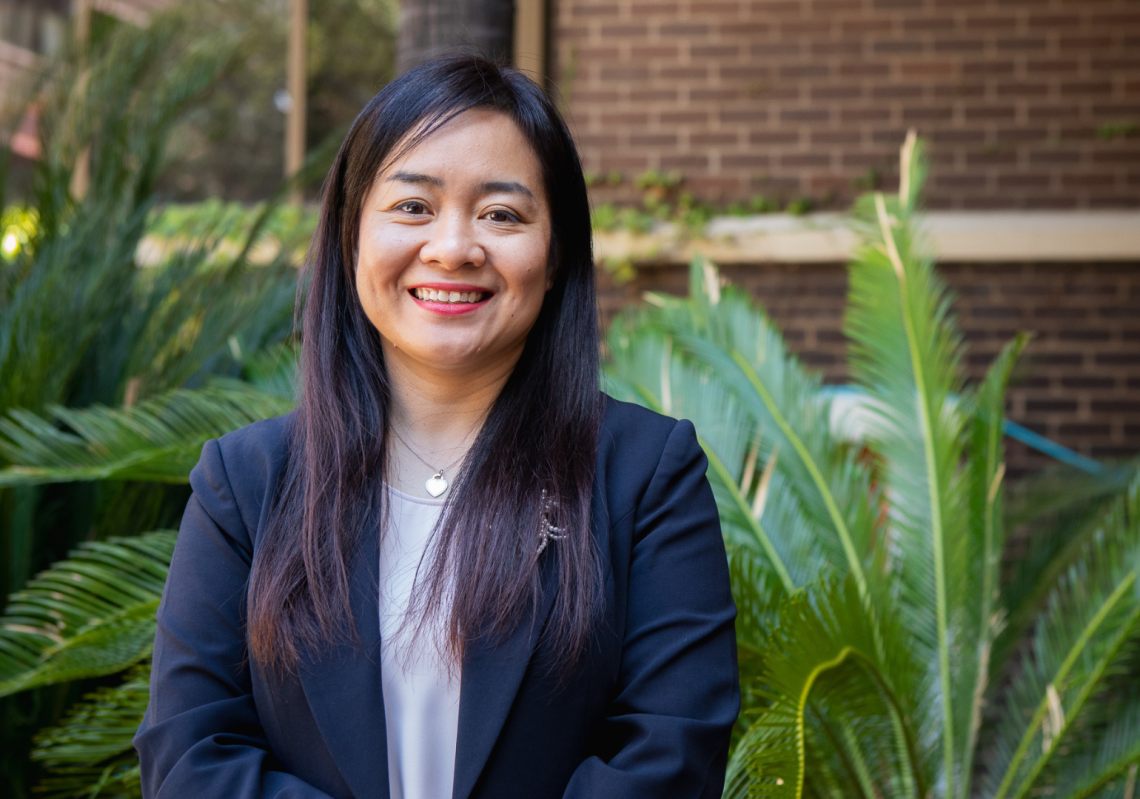The gender gap in science and engineering university courses has narrowed in recent years, but more still needs to be done to level the playing field, one of the country’s leading construction and fire safety engineers has said to mark this year’s International Women’s Day on 8 March.
Currently, women account for only a third of enrolments in science, technology, engineering and maths (STEM) courses at Australian universities and hold 15 per cent of STEM-qualified jobs. They make up just eight per cent of CEOs in the sector.
Associate Professor Kate Nguyen is a world-renowned researcher into novel construction materials that improve sustainability and reduce fire risks. The Australian named her as the country’s top scholar of composite materials in 2021, and she heads the Innovative Fire and Facade Engineering Group at RMIT in Melbourne.
During her decade in Australia, she’s witnessed a significant increase in the number of female engineering students and academics, but told create that progress has still been slow.
“There’s still a perception that it’s a male profession, and that will take time to change,” she said. “I recently visited a building site with a female colleague and the manager looked at us and asked who’d actually be doing the work. He was looking around as if to see where the man in charge was.”
A desire for engineering
For Nguyen, the prejudice took her back to her childhood in Vietnam where she’d had to fight hard to be taken seriously in her chosen field.
“My father worked in chemical engineering at university, so I was exposed to laboratories and plants at a very young age and met many engineers,” she said. “Watching how he was able to find ingenious, practical solutions to real world problems ignited a desire to pursue the same career pathway.”
Her determination was so strong that she brushed aside the cultural conventions that discouraged so many girls. Even her parents needed convincing that engineering was an appropriate area of study, but they knew better than to stand in her way.
“When my mum and dad saw how much it meant, they supported me to do a degree in materials engineering at Hanoi University of Science and Technology,” she said. “Even though at the time fewer than 10 per cent of those on my course were girls. In one of my first classes, I was one of only two girls in the entire lecture theatre.”
She studied for her PhD in civil engineering in Australia, some of it spent working with a facade manufacturer on developing innovative fire safety cladding materials to protect buildings.
Since then, she’s become the first researcher in civil engineering to receive the prestigious L’Oréal-UNESCO For Women in Science Fellowship, and the second Australian female engineer to receive the Batterham Medal for Engineering Excellence from the Australian Academy of Technological Sciences and Engineering.
She recently received the 2023 Victoria Young Tall Poppies Award from the Australian Institute of Policy and Science.
Supporting working mothers
When Nguyen joined RMIT as a senior lecturer in 2019, she saw firsthand the ways in which it was attracting more women into STEM.
“They talked to me about being a working mum and the ways that the work environment could be changed to best support staff,” she said. “My young family was obviously a huge commitment so knowing that I was going to be looked after was a big incentive to work there.

“I was particularly impressed at how they tailored the support for particular critical life stages such as early motherhood and having school-age children.
“Such an approach is invaluable as it ensures relevant factors are considered when assessing performance and promotions. It’s not about lowering the bar; it’s about encouraging a healthy work-life balance while maintaining equal access to opportunities.”
Trailblazing research
At RMIT, Nguyen was part of a team that developed a revolutionary new non-combustible cladding material that’s lighter and more environmentally friendly than anything currently on the market.
In conjunction with Sustainability Victoria, she collaborated with Brickworks and the University of Newcastle to devise a new type of mortar that separates more easily from bricks when a building is demolished, meaning the bricks can be reused.
In another groundbreaking project, she is investigating new innovations for engineered timber and how it can be safely used in high-rise buildings.
RMIT has increased its intake of female engineering students recently. It has also taken steps to ensure more gender-balanced interview panels and that consideration is always made of any personal circumstances that may affect candidates.
“I’m passionate about getting more women into STEM and proud that I’m helping to support the next generation of female engineers,” Nguyen said. “It’s been wonderful to see such big increases in those attending my lectures and feel very fortunate to have amazing female researchers working with me in our research group.
“I believe very strongly that exposing young girls to the possibilities in primary or high school will get them interested and help them see a pathway towards an engineering or science career.
“It worked for me and I can see it working for the young girls I speak to. I find it very exciting to see that happening more and more.”
This year Nguyen is engaging secondary students across Victoria to showcase her research in Quantum Victoria’s Tall Poppy Experience Event on 26 March following the virtual Engineer Talks earlier this month.
Find out more about engineering opportunities for undergraduate and PhD students at RMIT.




